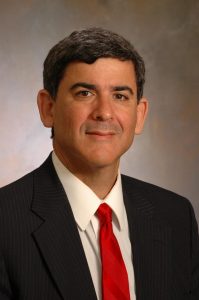Recommended

Vascular disease is caused by blockages within peripheral arteries. The resulting lack of circulation can cause severe complications. Bypass surgery, balloon angioplasty, and stents are the most common treatments for severe cases. Eton says these approaches are costly, invasive, and often do not offer a durable result to improve patient outcomes. “For the billions of dollars spent on this disease, patients who had surgery or catheter based treatments experienced variable and often limited benefit,” he says. “We have identified a more durable solution.”
Eton began searching for that durable solution in 2000 by starting with a simple hypothesis—nature and the human body already know how to grow new vessels. “As we grow, so did our vessels; no vascular surgeon is needed,” he says. This capability to grow new vessels is weakened in patients with severe peripheral artery disease. Dr. Eton devised a two part treatment to deal with this weakness. Patients wear an external pressurized pump on their calf and foot for three hours per day, one hour at a time. A bone marrow stimulant used in cancer treatment is given by injection under the skin every 72 hours for a month. Patients were enrolled that were scheduled for amputation following failed standard procedures. A significant improvement in amputation-free survival was achieved.
Eton credits the idea for this new approach to his years at MIT. “Most vascular surgeons are technicians. Being educated in the basic and applied sciences facilitated my foray into the literature of different disciplines. Each discipline offers insight into aspects of the disease,” he says. “By having an MIT grown fluid-mechanics and engineering background, coupled with the problem solving capability, augmented by a background in cell and molecular biology, it was no effort for me, as a vascular surgeon wrestling with the disease in the operating room, to appreciate the nuances these fields could offer and to come up with a simple solution,” he says.
A chemical engineering major, Eton made the transition to medicine with a little help from MIT’s Independent Activities Period (IAP). During IAP, Eton worked as a researcher at Mass General Hospital collecting data as surgeons ran a study that involved putting artificial hearts in cows. When an assisting surgeon fell ill during the study, Eton was given an opportunity. “The surgeon looked right at me and said ‘put your gloves on and help me out,’’ he recalls. After a week of assisting, Eton was given the chance to put in a few sutures, impressing the surgeon. “You have good hands. You go into surgery,” Eton recalls. “The surgeon was so respected that I took it to heart.” Eton would later become a vascular surgeon.
Eton’s cell therapy treatment is in clinical trial at the University of Illinois Hospital and he hopes to bring the treatment to market in the next five years.







